A very early Deskstar model, the DJAA-31700 was the largest capacity in this particular series. This series was available in both 1700MB (DJAA-31700) and 1270MB (DJAA-31270) capacities, being a rock solid choice in 1996.
This particular drive came from an old Macintosh, clearly labelled with Apple’s “special” firmware addition. Fortunately, it’s still perfectly usable in any era-correct machine.
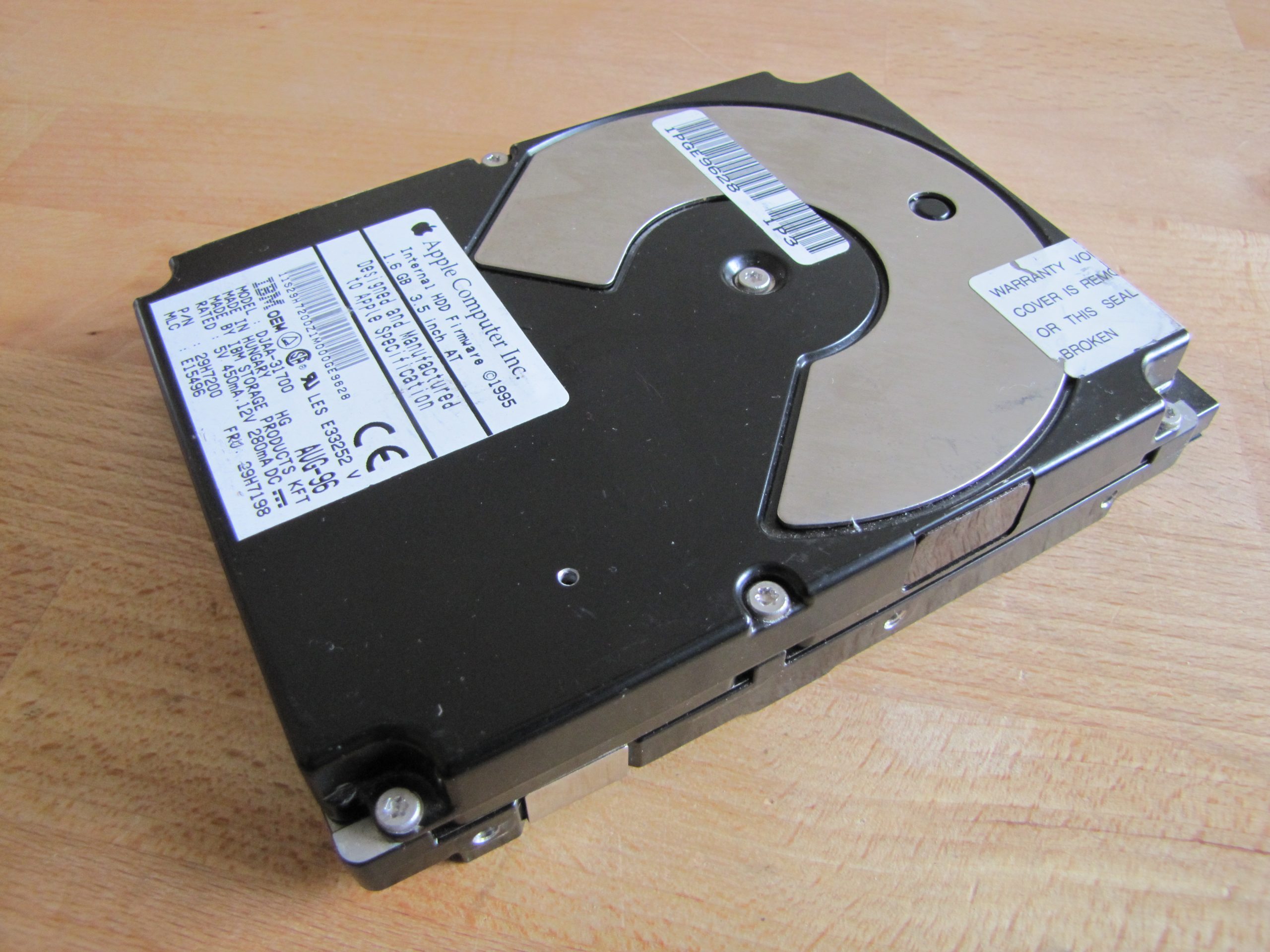
Drive Attributes ------------------------------------- IBM Deskstar DJAA-31700 ------------------------------------- Capacity 1700MB Mfc Date 1996-08 Format 3.5" Interface PATA Platters 2 Heads 4 RPM 4500 -------------------------------------
The design of these is basic, sporting a very usual IBM-esque utilitarian outcome. With 2 platters and 4 heads, this drive meets its expectation of 1700MB in capacity. The only difference between these and the DJAA-31270’s is the lack of a single head, equating to each platter having approximately 425MB per surface.
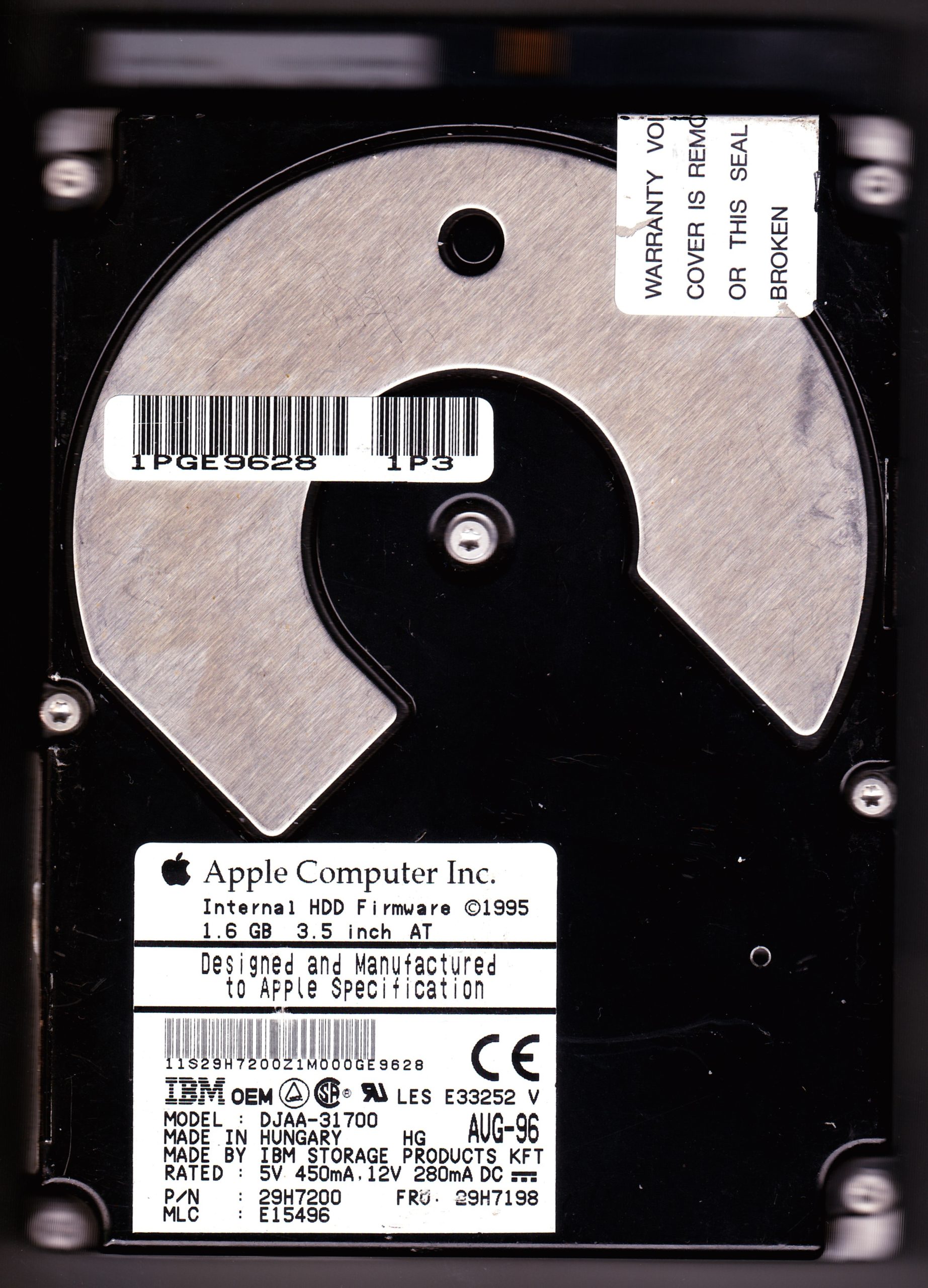
There’s nothing fancy about the labels on these. IBM kept up with this very familiar format throughout their drive manufacturing history, with some minor changes of course. Fortunately, IBM has always been very up-front about when the drive was manufactured. This one dates from mid-1996.
This drive was manufactured in Hungary, but this model was also produced in IBM’s brand new factory in Thailand, which they didn’t own at the time these were made (notably, by the expression “Made for IBM in Thailand”). Unfortunately, IBM had stopped all production of drives in the UK by late-1996, which left out this design from that particular origin of manufacture.

These drives sport a fairly interesting PCB-layout. IBM was clearly able to produce two of these PCB’s in a single rectangular format, which would then be seperated in halves. What we see above, is one half of a rectangular PCB print-out. The result is an interestingly shaped PCB, but it does make the backside of these look quite fun.
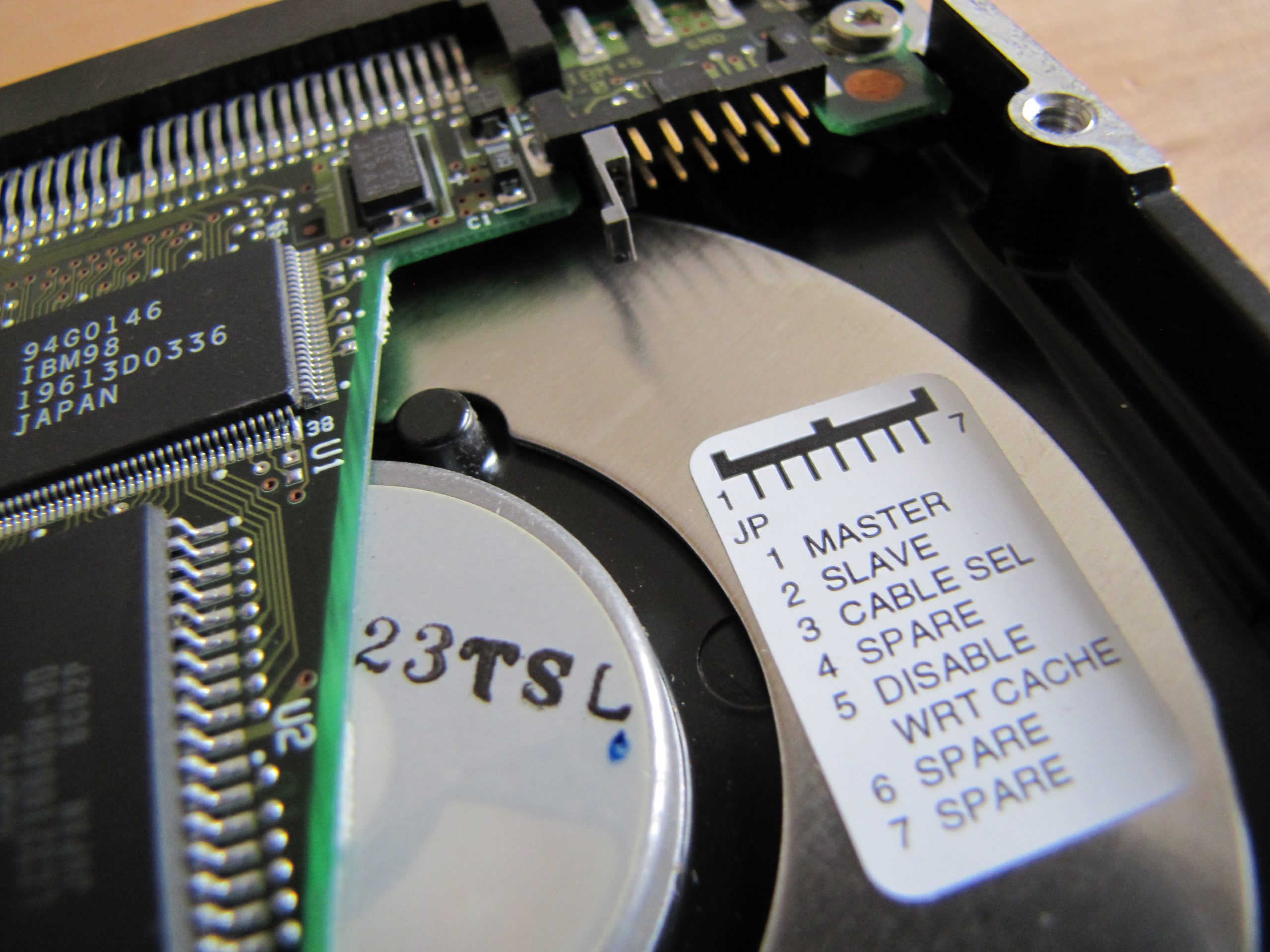
IBM had a very simple and clear mode selection header on these drives. The labelling and overall user-friendly nature of these is something to admire.
JP2 JP3 JP5 JP6
JP1 Slave Cable Write RESERVED
Master | Selection Cache |
| | | JP4 | | JP7- RESERVED
+--+ +--+ +--+ +--+ +--+ +--+ +--+
|1 | |3 | |5 | |7 | |9 | |11| |13|
+--+ +--+ +--+ +--+ +--+ +--+ +--+
+--+ +--+ +--+ +--+ +--+ +--+ +--+
|2 | |4 | |6 | |8 | |10| |12| |14|
+--+ +--+ +--+ +--+ +--+ +--+ +--+
---------------------------------------
-----------Raw-Card--------------------
Position:|JP1| JP2| JP3| JP4| JP5 |
Pin: |1-2| 3-4| 5-6| 7-8| 9-10|
---------+---+----+----+----+-----+
Jumper: | ON| OFF| OFF| OFF| OFF |
| | | | +------------ Write Cache enabled
| | | +----------------- Not Used (RESERVED)
| | +---------------------- Cable Selection
| | disabled
| +--------------------------- Slave not assigned
+-------------------------------- Master assigned, and
appropreate for single
drive present.
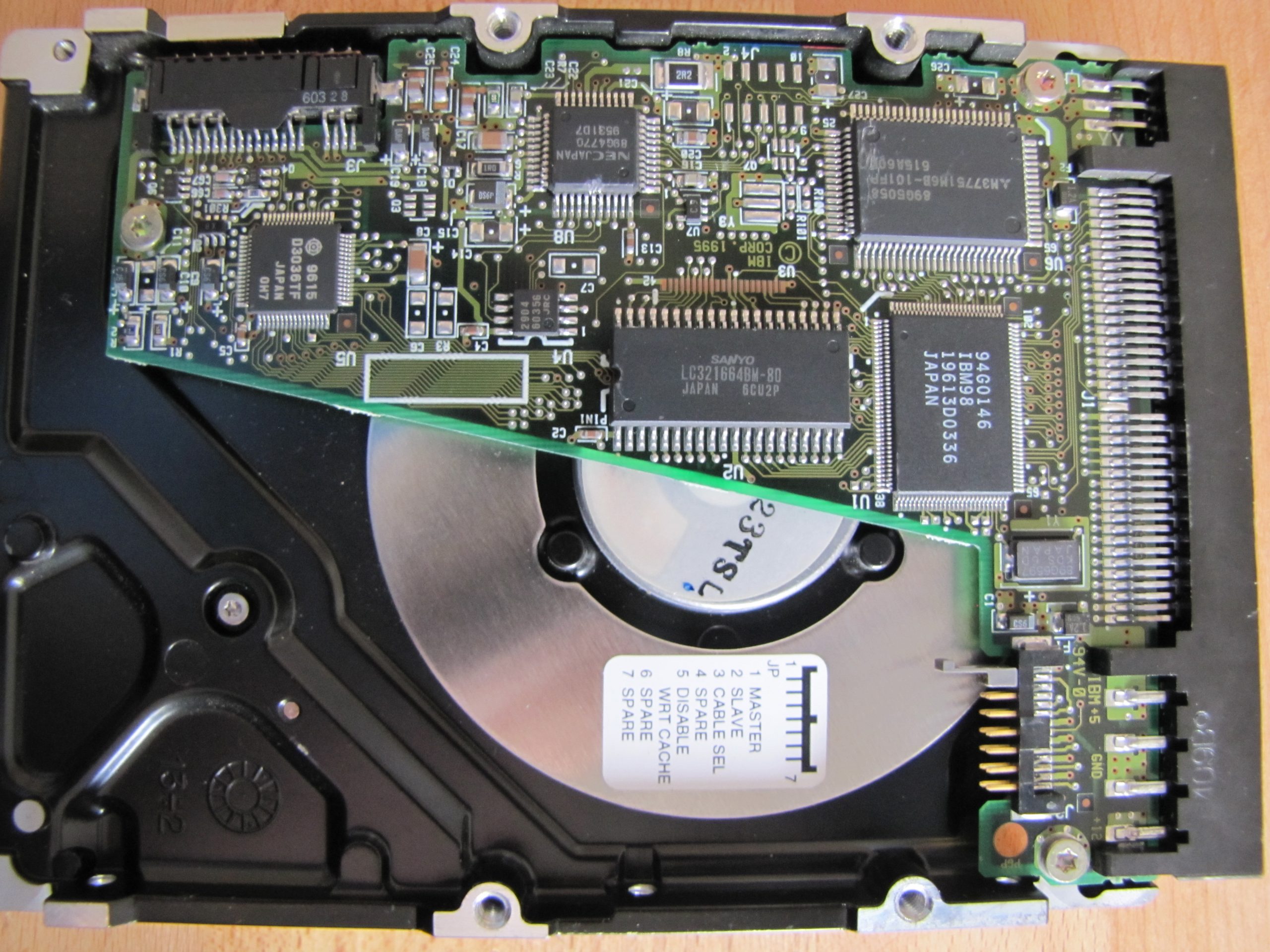
There’s a few interesting IC’s on this board. Namely, the custom IBM IC alongside the Mitsubishi IC, who were a common partner with IBM for many years to come after this, concerning drive IC’s. The J3 header connects the drive heads to the PCB with a fairly delicate ribbon cable.
Alongside the usual Molex connector, these drives have the ever-common mini-power connector also, with the following pinout:
+-----+ +-------+
|3 2 1| |4 3 2 1|
+-----+ +-------+
| | +- +5V | | | +-- +12V
| +--- +12V | | +---- GND
+----- GND | +------ GND
+-------- +5V
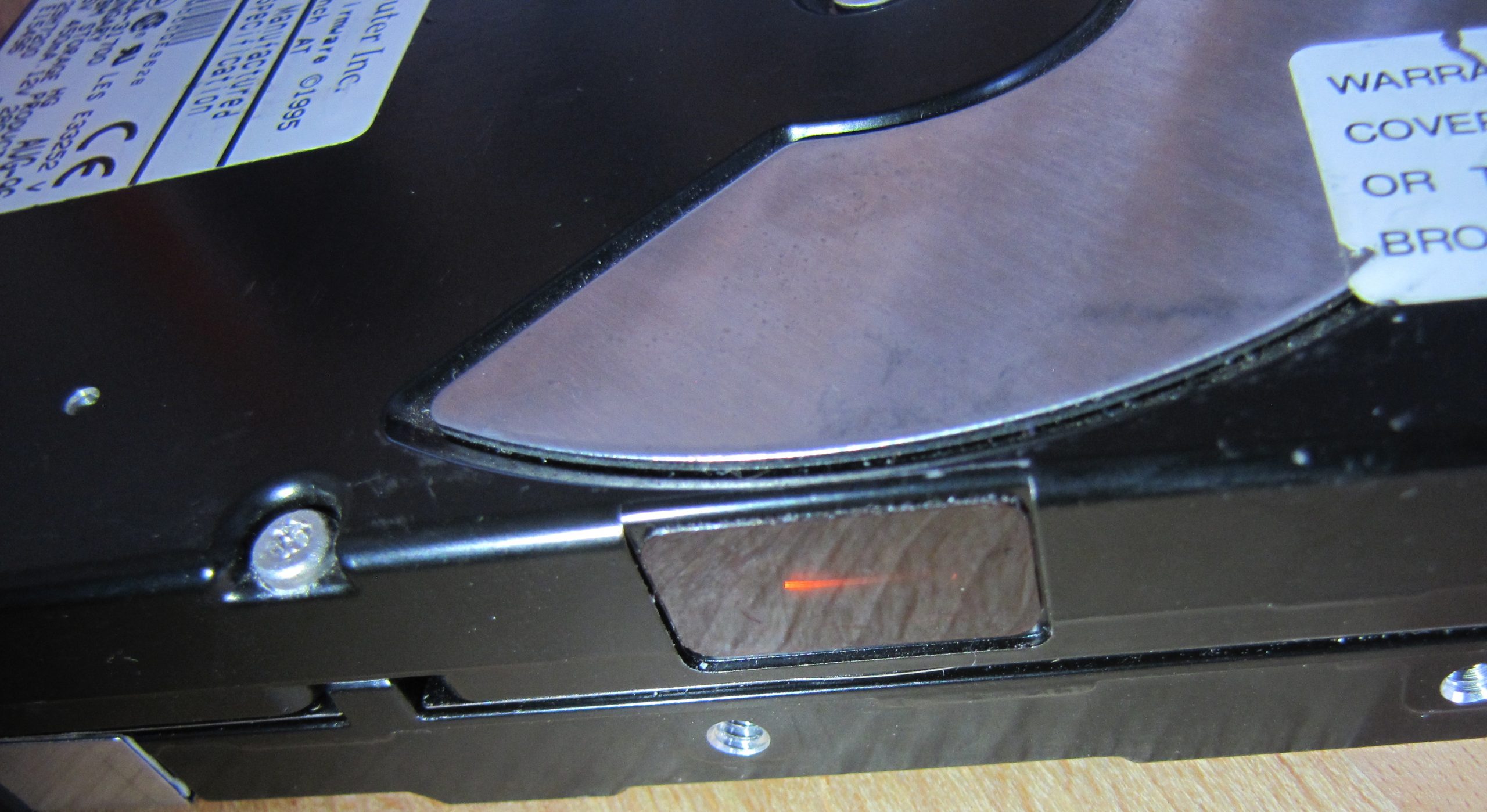
With a really fun warranty-killing piece of plastic, with the right angle you can see these drives working through a tiny window on the side. It’s quite hard to picture/demonstrate this, with the amber colour contrast present on this small sticker. Fortunately, it seems to hold up well enough, but it’s a fairly bizarre design choice aside from being good for killing these drives with the right abuse.

There’s nothing special concerning track layout, but these are nice and quick drives. Something you’d expect from IBM, with these drives being quite expensive when released, albeit with very good value comparatively.

These drives seem to hold up well. This particular unit is in perfect condition still, after almost 30 years.
In usual IBM fashion, I expect this drive to do well in the coming years, when it eventually gets used in a machine.
If you missed the video I made on this drive, you can find it here: